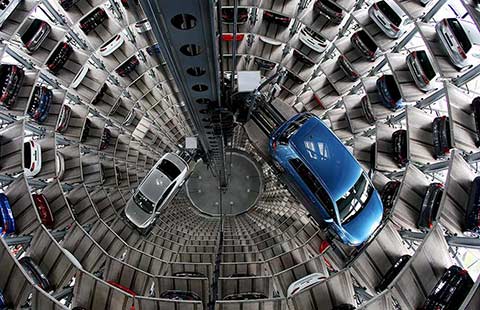Economy must adapt to changes
By Pei Changhong (China Daily) Updated: 2013-01-07 13:18The quantitative easing measures of the United States, the European Union and Japan can improve expectations for the global recovery and cushion the eurozone debt crisis' impact on the global economy. But these measures will not change the weak growth of the global economy. The International Monetary Fund's predicts that global economic growth will be a mere 3.6 percent in 2013.
Despite the improvement in the real estate market in the United States and the increase in the US government's expenditure, the US' agriculture, exports and investment in non-private real estate are still far from being healthy.
The eurozone is still struggling painfully with its debt crisis. The IMF predicts that the eurozone's local gross value of production will only grow by 0.2 percent in 2013. Meanwhile, economic growth in Japan and the emerging economies is slowing remarkably against the gloomy global backdrop.
The World Trade Organization has lowered its prediction for the growth in world trade in 2013 from 5.6 percent to 4.5 percent.
The deceleration in the growth of world trade has also reduced China's exports by a large margin. China's international trade growth from January to November in 2012 was only 5.8 percent.
At the same time, changes in international capital flows have affected China's usage of foreign capital. Since the second half of 2012, foreign capital has started moving out of emerging economies. According to the World Bank, foreign capital flowing into developing countries and emerging economies declined by 44 percent in the first half of 2012. Although the foreign capital flowing into China is still more than the foreign capital flowing out, foreign direct investment in China has dropped remarkably.
Yet, there are some positive signs that the year ahead will be better than last year.
This is because all countries are trying their best to promote economic recovery. The US financial market has become more stable and its banking industry's profit prospects are improving. In September, the European Central Bank announced it will buy without a ceiling limit the short-term national debts of the countries ridden by heavy debts in the secondary market, lowering the possibility of the debt crisis spreading to other countries. And the emerging economies still have huge potential to make and implement new macro-control and regulatory polices.
China should adapt itself to the rapidly changing international environment and make use of its domestic strengths to offset the negative influences from the outside world.
Despite difficulties last year, China's overall international trade can still increase by more than 6 percent this year, much higher than the world average of 2.5 percent and the emerging economies' average of 3.5 percent. The prices of most staple commodities decreased in the international market last year, producing a favorable pricing situation for China's trade with the world.
In fact there are plenty of favorable conditions for China to boost its economic growth this year. China's trade with emerging economies continues to grow, and exports of its electromechanical and labor-intensive products remain stable.
The western and central parts of China are gradually becoming robust and active areas for international trade.
According to the United Nations Conference on Trade and Development, China surpassed the US as the country attracting the most foreign investment in the first half of 2012 and is likely to maintain its status as one of the most attractive countries for global investors in the future.
China's urbanization provides the rare opportunity to coordinate all the tasks needed for its growth. It should also take proactive opening-up strategies and develop new strengths, while increasing the competitiveness of its products and services in a rapidly changing trade and economic environment.
The author is the director of the Institute of Economics of the Chinese Academy of Social Sciences. This article is first published in People's Daily.
- Economy will influence inflows
- The future global economy
- China's bank executives confident with economy
- New Year resolutions on economy
- China increasingly leading world economy: HSBC economist
- The changes and challenges for economy in 2013
- Confidence in the economy on the rise
- Economy may suffer as rich look overseas
- China-ASEAN Expo to be held in September in south China
- China's duty-free shop launches soft opening of 3rd outlet in Cambodia
- Anti-globalization sentiment likely to feed into G20 discussions: Italian expert
- China's home price growth moderates in July
- China Unicom's net profit plunges 80%
- Australia warned over grid deal block
- ODI, service trade numbers salvage lackluster foreign
- What's being said about upcoming G20 summit?


















